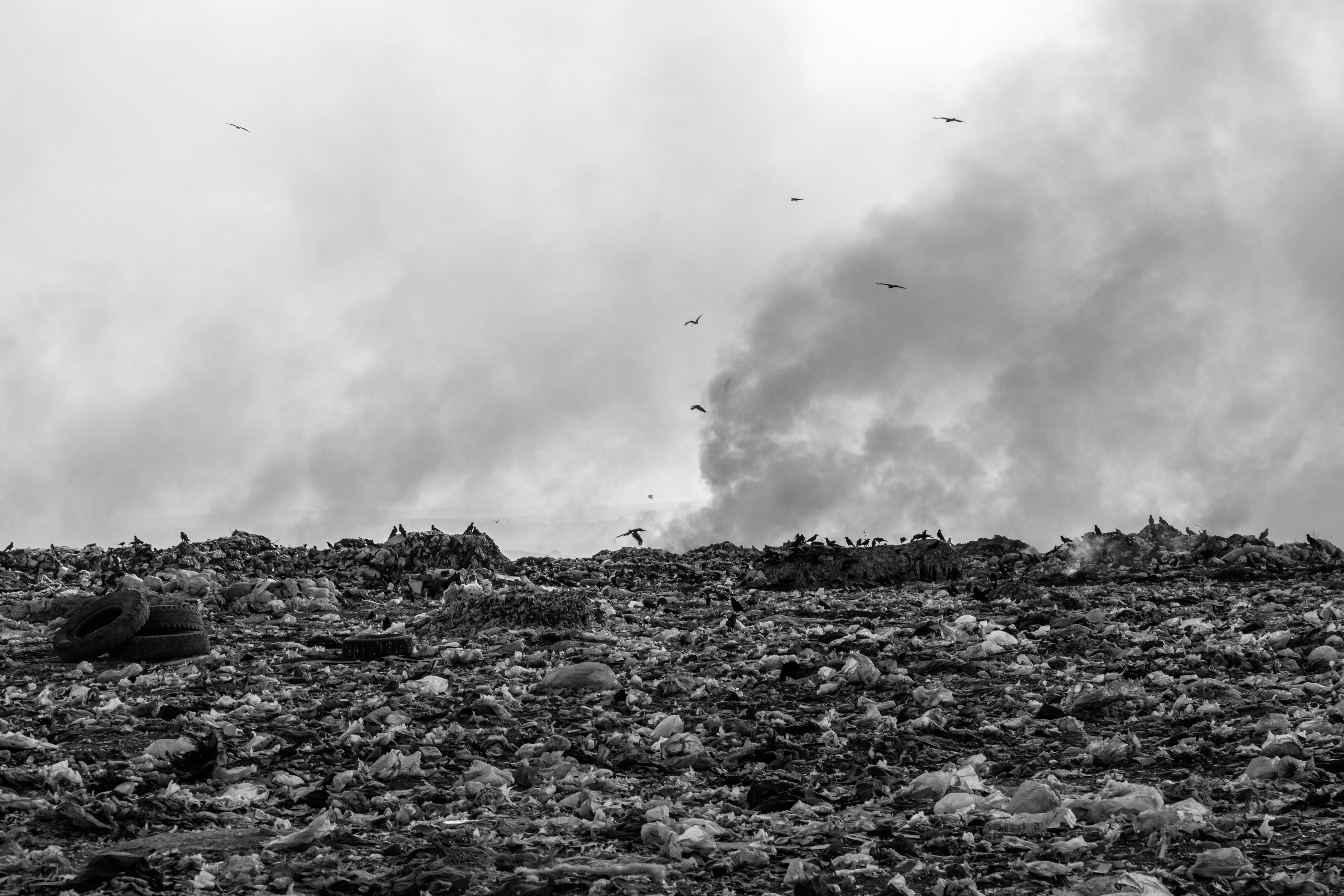
I recently had the pleasure of touring a landfill earlier this month, and it was anything but trashy.
Most of us don’t think about where our trash ends up once it leaves our bins - we all have busy lives with little time to spend dwelling on where our garbage goes. But if you lift the lid on the waste management industry and peek inside, you’ll find a complex, highly engineered system of sophisticated technologies and teams of dedicated people working around the clock to deal with the endless, accumulating challenges of our society’s collective waste.
A great example of this is the Cedar Hills Regional Landfill. I recently had the opportunity to tour this 920-acre facility located in Maple Valley just south of Seattle, and it was a fascinating and honestly quite lovely experience. You might not think of landfills as scenic, but only a small portion of the area is active at any time - the rest is capped and covered with sprawling grasses. Looking out, all you see are gentle rolling hills of grass and wildflowers, often spotted with wildlife like grazing deer and bald eagles. Like, lots of eagles. Sometimes hundreds. But no vultures. We have the bougiest trash raptors frequenting our garbage heaps out here in the great PNW.
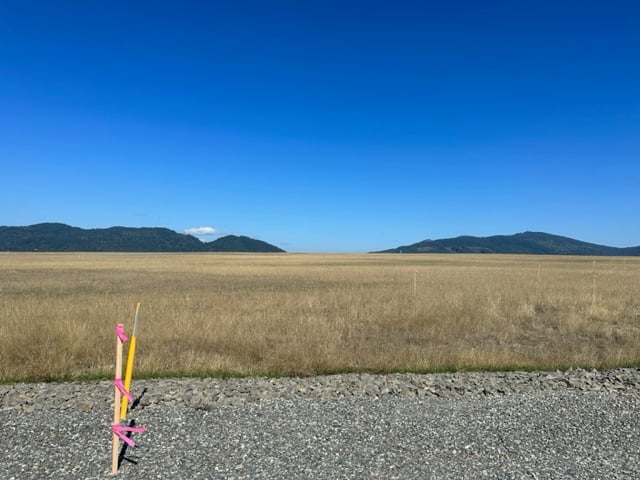
Most of us wouldn’t recognize an inactive landfill once it’s covered and planted.
The Cedar Hills landfill has been operating since the ’60s and receives all of King County’s waste (excluding the cities of Seattle and Milton), most of which is business and residential trash. It’s currently King Count’s only active landfill, but not for much longer - it’s filling up, and it’s expected to stop taking new waste around 2040, maybe a little later if we do a better job at recycling and composting. After that, the over 800,000 tons of garbage dumped here each year will have to go somewhere else. More on that in a second.
The term landfill conjures up images of giant piles of trash just dumped in a hole somewhere, but modern landfills are highly engineered facilities. According to our tour guide Scott, the Assistant Operations Manager at Cedar Hills, the industry is well-regulated and mostly very compliant. Some of these features include multiple linings to prevent leaching, as well as piping to capture the methane that is generated during the decomposition process.
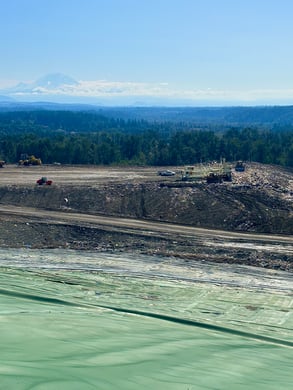
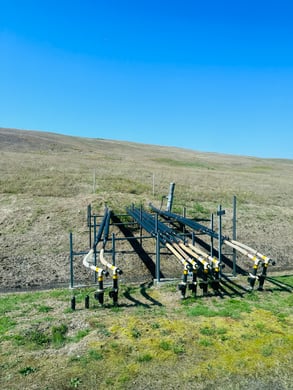
Left: The green geotextile lining is just one layer underlying a landfill site to prevent leaching
Right: Pipes emerging from the base of an inactive landfill remove methane
Methane capture is a critical feature of landfills. Methane is highly flammable, so allowing it to build up can have explosive consequences. It’s also a problematic greenhouse gas, 30 times more potent at trapping heat than CO2, so preventing it from escaping into the atmosphere is crucial in the fight against climate change. Methan is also valuable - the energy captured at Cedar Hills generates upwards of $7 million a year at the BioEnergy Washington (BEW) facility located on-site. The methane processed at this facility is sold to Puget Sound Energy and powers over 17,000 homes. Any methane that can’t be collected and utilized is burned off. Older landfills still generate a small amount of methane, but it’s less pure so can’t be used for energy.

This Bio Energy Washington facility located on-site at the Cedar Hills Regional Landfill converts methane generated by decomposing garbage into energy that powers thousands of homes.
Landfills fill up, and Cedar Hills is nearing the end of its lifespan. When it does, hundreds of thousands of pounds of garbage will have to go somewhere else, either to an existing facility (likely in Oregon), or to a new one. But nobody wants a landfill in their community, and existing ones will eventually fill up. There is a finite amount of land on this planet, and we can’t continue to fill it up with garbage indefinitely.
So what do we do?
There are many things that we as individuals can do to reduce the amount of waste we produce. Buy less, buy local, buy in bulk. Recycle. Compost. Fix what we break instead of replacing it (although that’s easier said than done given how many products are not made to be fixed, or worse, have programmed obsolescence - aka are built to fail). Some municipalities have found that charging more for larger bins is an effective way to incentivize waste reduction.
But individual behaviors can only take us so far in an economy driven by consumerism that allows the producers of these products to make whatever they want and leave us taxpayers to pick up the tab for disposing of those products. Our garbage guide Scott estimated that ~ 70% of the trash that comes into Cedar Hills could be diverted - meaning most of what we’re throwing away could be fixed, recycled, or composted. It’s insane. And it’s unsustainable.
What we need is policy change. It shouldn’t be on us as consumers to pick the least harmful choices from a menu of wasteful products. Many of us don’t have the time or energy to do research and review every product and its packaging, even though our values compel us to want to make sustainable decisions. There are no truly sustainable choices in a system that incentivizes waste and then does an inadequate job of managing it.
There are a number of policies that we need to get to a zero-waste world, many of which push us towards a more circular economy. For example, right-to-repair bills are critical for preventing companies from making it difficult and expensive to fix their products. Laws that eliminate planned obsolescence, such as Canada’s recently passed Bill 29, would prohibit companies from intentionally reducing the life span of their products in order to sell more.
Most of these products come in packaging - over 30% of the plastic waste we generate is just for packaging. It's borderline madness when you think about it - we are extracting and burning fossil fuels to create products that are shipped back and forth across oceans (on ships that burn diesel) as part of the refining and manufacturing process; these products are used once, then end up in a landfill, our communities, or the ocean, where they will persist for centuries.
Implementing Extended Producer Responsibility (EPR) would go a long way to reduce the amount of packaging filling up our landfills. EPR is the industry term for a system that makes the producers of said packaging pay for the end of life of their products, thus incentivizing them to create reusable, compostable, or truly recyclable products.
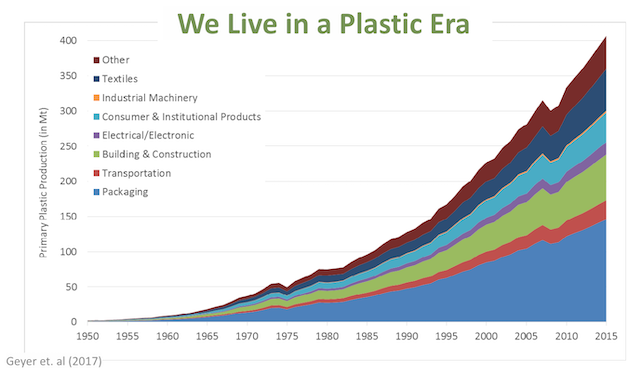
Plastic production continues to increase every year and is projected to quadruple in the coming decades - over a third of this plastic is used for packaging, most of which is single-use
Surfrider Washington and our partners at the Plastic Free Washington / Washington Sin Plástico Coalition have been working to pass legislation in our state that would overhaul our recycling system so we recycle more, pay less, and ensure more equitable access to curbside recycling throughout the state. This year we pushed for the passage of the WRAP Act, which died halfway through the legislative session. But we’ll try again next year, and the year after that, until we put in place responsible policies that reduce or eliminate the costly and unnecessary waste that is filling up our landfills, communities, and waterways.
Make sure you’re subscribed to our newsletter (sign up below) and follow your local chapter to stay informed about upcoming policies and opportunities to engage in next year’s legislative session.
Huge thanks to our partners at Zero Waste WA for providing this opportunity.
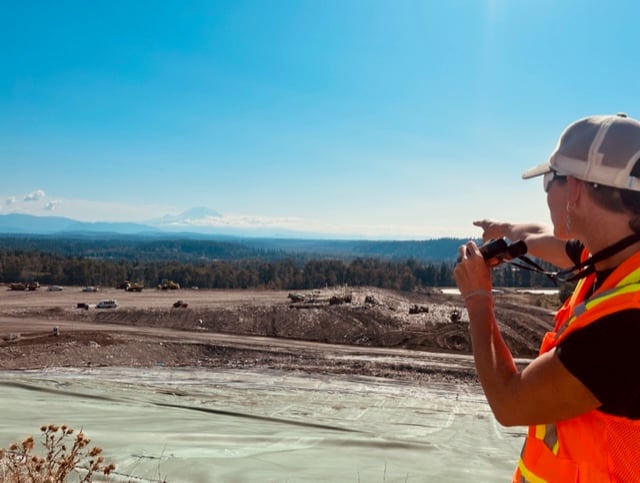
Look yonder! Could that be a policy solution to all this garbage in the distance?! Let's hope so!
